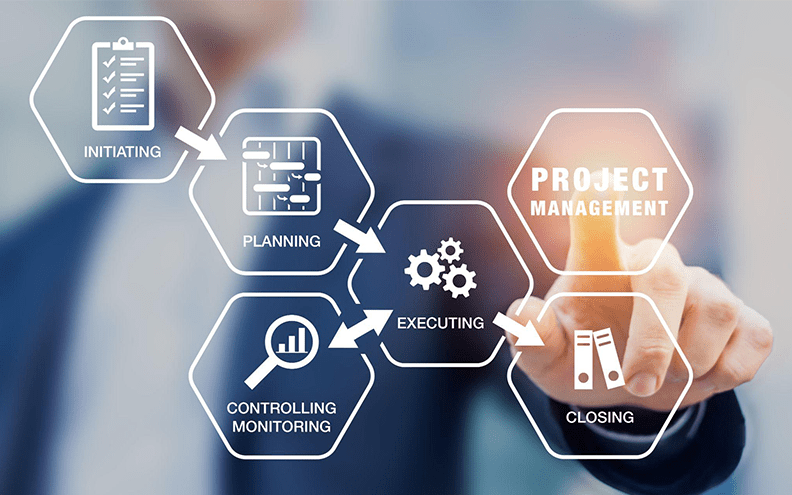Introduction
Unexpected events and circumstances can cause delays and cost overruns in any project. Can you overcome these challenges yet complete your projects on time and within budget? We say – YES! Optimized project controls are the way to go. However, what are project controls? How do they help in the project’s success? Read this blog to find answers to all your questions.
What is Project Control in Project Management?
Project controls refer to the processes, tools, and methodologies used to plan, monitor, and measure project aspects by tracking schedule, project cost, scope, and quality. They help adjust the project performance against the original project plan and objectives. Project controls function as a framework to prevent any significant impacts on the timeline and budget while watching potential risks throughout the project life cycle.
Why Are Project Controls Important?
Project control guarantees the delivery of a project through a structured approach with the expected quality. These controls help project managers make informed decisions, identify and mitigate issues, know deviations from project scope, and stay aligned with project goals.
- Timely detection & action: Project controls let you identify any deviations from the project plan. This identification ensures that corrective action is taken promptly before significant delays or budget overruns occur.
- Data-driven decisions: Project controls provide accurate and real-time data on the project. They help project managers avoid assumptions and make well-informed decisions backed by data.
- Collaboration and ownership: Project controls encourage clear communication of progress and potential roadblocks. Hence, they promote transparency within the team, leading to better collaboration and accountability.
- Risk management: A key component of project controls, the risk management identifies and addresses potential risks upfront and helps ensure success.
- Enhanced project success: By taking advantage of project controls, project managers can achieve project objectives on time and within budget.
Project Controls vs Project Management
Although the terms sound similar, project controls and management focus on distinct aspects of project delivery. They also complement each other in function. Project management covers various management activities such as planning, execution, leadership, team management, and stakeholder communication. It follows a work breakdown structure (WBS) to simplify these tasks. The WBS organizes each work into smaller, manageable units for better monitoring and controlling.
On the other hand, project controls include a structured process of measuring how well a project is performing. They compare the project’s performance to the initial plan and help take action to handle any deviations. In other words, project management sets the direction and goals of the project, while project control ensures efficient execution and delivery within the planned timeframe and budget.
Related: Construction Project Management
Components of Project Controls
Project controls contain several components that work together to ensure alignment between project objectives and organizational goals.
The core components of project controls are:
- Schedule management: Tools like Gantt Charts and Critical Path Methods (CPM) monitor task progress against the project schedule and proactively identify deviations or possible roadblocks.
- Cost Management: Cost management tools, such as Cost Variance Analysis and Earned Value Management (EVM), help forecast potential cost overruns and ensure project finishes within the estimated budget.
- Risk Management: Risk management is a proactive approach to managing risks so that projects can minimize disruptions and ensure on-time and successful completion.
- Performance Management: Metrics and Key Performance Indicators (KPIs) measure quality, efficiency, and overall project health. These metrics help in evaluating project progress against planned objectives.
- Communication Management: Effective flow of information in the project prevents potential risks and changes to the plan by ensuring that all stakeholders are informed about the project status.
Benefits of Project Controls
Project controls offer a myriad of benefits. Some of these are:
- Improved project success rate: Projects using project controls are more likely to achieve their objectives.
- Efficient resource utilization: Resource allocation based on real-time data improves efficiency and avoids unnecessary expenses.
- Boosts stakeholder confidence: As the project progresses, transparency and regular communication build trust and confidence in stakeholders.
- Reduced risk impact: Risk assessment activities minimize the negative effect of unforeseen events on project timelines and budgets.
- Data-driven judgments: Project managers can make informed decisions backed by accurate and timely data, resulting in better project performance.
Best Practices in Project Controls

To make effective use of project controls, here are some best practices to follow:
- Define roles and responsibilities: If aware of roles and responsibilities in data collection and reporting, team members follow the process and contribute to better outcomes.
- Utilize technology: Projects can use project management software with built-in project control functionalities. These software help streamline the processes such as data collection, analysis, and reporting.
- Record accurate and up-to-date data: Project controls fed inaccurate or delayed data cannot produce correct outcomes. Therefore, it is crucial to establish sound data collection and reporting processes.
- Keep stakeholders in the loop: The team should regularly share updates on project progress, potential risks, and changes with stakeholders. Keeping them in the loop encourages collaboration and helps them actively participate in the project.
- Assess and adapt: Managers should assess the project controls regularly to gauge their effectiveness. A good project control system adapts to the evolving needs of a project.
Challenges to Implementing Project Controls
Despite their significant role in the project’s success, you might face some difficulties implementing project controls:
- Change resistance: Team members accustomed to working in a particular way may resist implementing a new process. Openly communicating the importance of a change and emphasizing the benefits of the new process helps overcome the resistance.
- Data Overload: Excess data can be overwhelming to process and draw insights. Defining key metrics simplifies the collection and analysis of data that has the most significant impact.
- Resource allocation: Some projects, especially small-scale ones, may face challenges in allocating resources to manage project controls. Utilizing cost-effective software solutions and leveraging team collaboration encourages the optimum use of resources.
- Integration with existing system: Evaluation of existing project management methodologies is essential for seamless integration with project controls.
How OnIndus helps you in Project Controls?
OnIndus provides robust project controls expertise, enabling you to optimize project management and achieve meticulous oversight. Here is how OnIndus can help you:
- Advanced Tools and Methodologies: OnIndus leverages advanced project management software with integrated project control features to streamline data collection, analysis, and reporting processes.
- Tailored Solutions: We understand every project is unique. Our experts will create a custom solution that fits your specific needs, helping you get the most out of your resources and achieve maximum efficiency.
- Expert Consultation: OnIndus goes beyond software. Our experts are here to guide you through every step of implementing project controls, answering your questions, and addressing any challenges you may face.
- Continuous Support: We provide ongoing support throughout your project, ensuring a smooth integration and continued effectiveness of project controls.
- Adaptability and Innovation: OnIndus is always adapting and innovating. We constantly evaluate and adopt the latest project management methods, ensuring your project controls stay up-to-date and meet your evolving project needs.
Conclusion
Project controls set a guiding path for delivering a successful project within its estimated budget and timeline. Further, they offer the tools and processes for effectively planning, executing, monitoring, and controlling the project activities. By using the project controls effectively, you can actively drive your project through success.
OnIndus empowers you to deliver projects on time and within budget. Our project controls tools help you plan, track, and adjust your project effectively. With OnIndus, you can proactively manage risks, allocate resources efficiently, and achieve exceptional results.
So, why wait? Take control of your projects today. Reach out to our experts for a personalized consultation session.
Frequently Asked Questions (FAQs)
Q: What are the five components of project controls?
The five commonly referenced project controls are
- Schedule Management
- Cost Management
- Risk Management
- Performance Management
- Communication Management
Q: What is the difference between project controls and project management?
Project controls and management have distinct scopes. Project controls focus on measuring, analyzing, and adjusting project performance against the plan. On the other hand, project management includes a wide range of project planning, executing, and monitoring tasks. Both processes are equally important and complement each other in achieving project success.
Q: What is a project control structure?
The project control structure defines the roles and responsibilities of project team members, along with processes, tools, and techniques used to implement project controls. Project managers can customize the structure according to each project’s specific needs and complexity.
Q: How do you write project controls?
Writing project controls begins with understanding the requirements and documenting specific processes, tools, and techniques that monitor and control your project. Project controls plan, schedule, and define the roles and responsibilities of the team, explain data collection procedures, provide reporting formats, and specify communication protocols.

